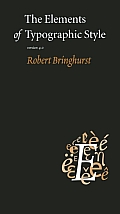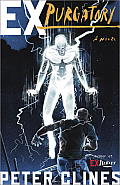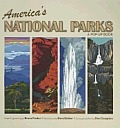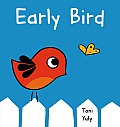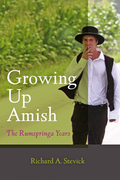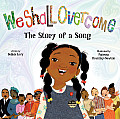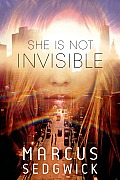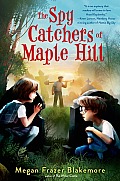Link to this review in the form of a comic strip by billba tagged nonfiction
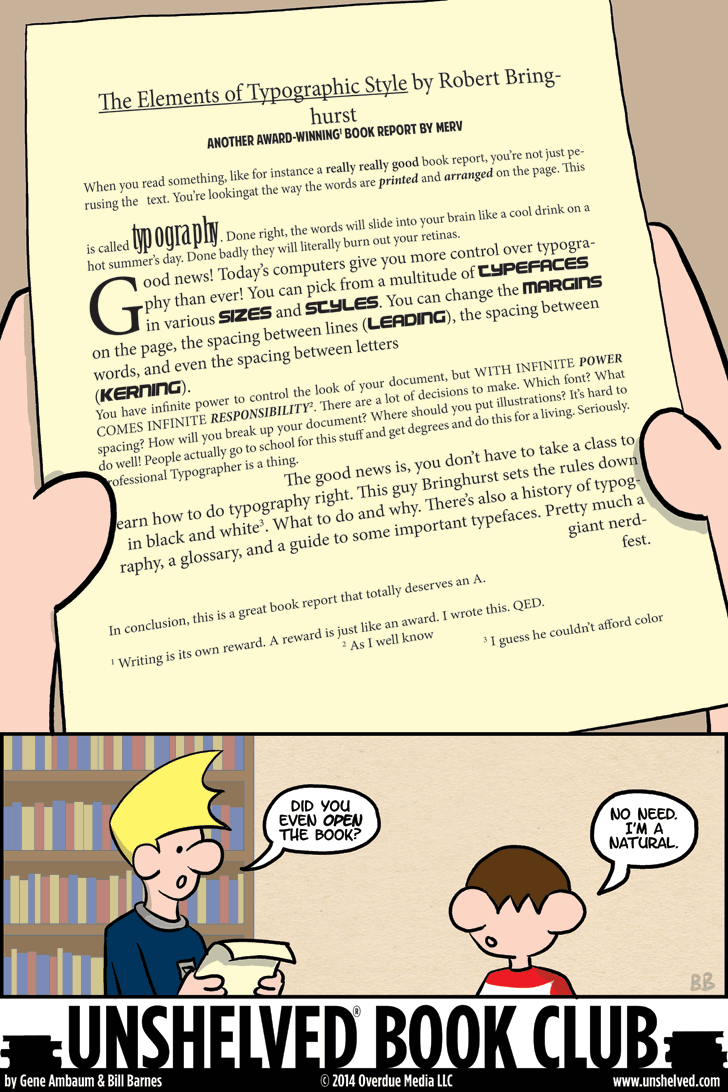
Click for the full-sized comic
@bookblurb Best practices for making your text come alive on the page. Choosing a font is just the beginning!
Link to this review by emilyreads tagged nonfiction
Writer and former competitive miler Cameron Stracher chronicles the early days of running as a competitive sport in the U.S. through the lens of the seven-mile Falmouth Road Race. (It was originally promoted as a moveable party from one bar to another.) From the early 1970s to the early 1980s, running grew into a national and international obsession, as world records fell, thousands of amateurs picked up the habit, and races changed from weekend larks to big money-makers. Stracher focuses on three runners: Frank Shorter, the no-nonsense Olympic champion; Bill Rodgers, the laissez-faire Boston Marathon champ; and Alberto Salazar, the Young Turk driven to exorcise his mental demons by pushing his physical limits. These three men were at the forefront of that growth, as “jogging” became “running” and a boom was born.
Why I picked it up: I’m a reluctant, recent convert to running, and last year I ran my hometown’s biggest race, the Bix 7, which Bill Rodgers helped make famous. I was interested to learn more about the early days of running as both sport and hobby.
Why I finished it: Although the narrative isn’t chronologically seamless (Stracher jumps around from year to year, race to race, venue to venue), each chapter has momentum as the torch passes from one running pioneer to the next.
It’s perfect for: Running fiends, obviously, along with fans of Frank Deford, Stefan Fatsis, and other NPR-style sports journalists. Stracher captures the personalities and quirks of each character vividly, from the good-ol’-boy race promoter Tommy Leonard to the psychologically tortured Salazar.
@bookblurb The story of how running became a national obsession in the U.S.
Link to this review by geneambaum tagged horror • superhero
In George’s dreams, he’s super strong and fighting monsters. Sometimes these dreams seem to be invading his waking life. At random moments, students on campus where he works suddenly look like undead creatures, and Los Angeles looks like it’s in ruin. Then he meets Madelyn, who tries to convince him that he’s really St. George, the superhero known as the Mighty Dragon, and that the world they’re living in isn’t real.
Why I picked it up: It’s one of the sequels to Ex-Heroes, and I was in the mood for another superheroes vs. zombies novel.
Why I finished it: It’s clear from the beginning, because of the book’s place in the series (it’s the fourth book), that this has to be the same post-apocalyptic world filled with zombies. The heroes slowly come together and try to figure a way out of their delusion and what’s going on. Why haven’t they all been killed and devoured if what they’re seeing is a lie, and in reality they’re surrounded by the shambling, hungry dead? It’s tense. But the mood is lightened by Barry, also known as Zzzap, who makes Star Trek references throughout, comparing their experience to both the mirror universe and the holodeck.
Readalikes: For superhero fans and fanboys, there are other superheroes vs. zombies books out there. Marvel Zombies features the likes of Spider-Man and the Avengers becoming undead and then making snacks of one another and their neighbors. In DC’s Blackest Night dead heroes and villains rise from the grave with the help of black power-rings (think Green Lantern’s ring) and try to kill everyone. Or if you’re in the mood for a funny (but still gross) look at the zombie apocalypse, my daughter and I highly recommend Zombieland.
@bookblurb George’s dreams of having superpowers and fighting undead monsters start invading his waking life.
Link to this review by ang tagged picture book • nonfiction • coffee table book
These six double-page pop-ups about National Parks are fashioned after the bold, stylized posters created by the WPA (Work Projects Administration) in the 1930s and ‘40s. Images of vintage WPA posters are included along with highlights of the parks of each region.
Why I picked it up: This caught my eye because my father worked for the National Park Service, and I grew up moving from park to park. But I was compelled to purchase it because I’m a huge fan of the work that came out of the WPA’s Federal Art Project. I’ve spent hours combing through the Library of Congress archives. They have beautiful posters about books as well as the most entertaining collection of syphilis awareness posters on the internet.
Why I finished it: The primary pop-ups are impressive — the red walls of the Grand Canyon rise up from the pages, a mountain goat balances atop a cliff at Glacier National Park — but the heart of this book lies in the quotes, photos, maps and other bonuses nestled alongside the larger pop-ups. An inset booklet featuring wildflowers of The Great Smoky Mountains National Park has fire pink blossoms that spin. You can peer into the top of an old red touring bus as it emerges from a tunnel, and a section of the floor of the Grand Canyon slides out to reveal the park’s geologic history.
It’s perfect for: My father. He and I buy the National Parks Poster Art of the WPA every year, and he also loves pop-ups for grown-ups, like Frank Lloyd Wright in Pop-Up. And he’ll appreciate that a portion of each sale goes to the National Parks Conservation Association.
@bookblurb A pop-up book about National Parks styled after the WPA posters of the 1930s and ‘40s.
Link to this review by darcy tagged picture book
Early Bird wakes up before the sun rises and begins to look for breakfast. She has many steps to take before she reaches the Early Worm.
Why I picked it up: I work with Toni. She’s an excellent artist, and she started out selling greeting cards and bookmarks around Seattle. She has also created Kokoro, a character that my daughter adores. I was delighted when she told me her book had been accepted by an agent and sold to a publisher.
Why I finished it: This charming story follows a bird in the morning on a journey across the grass, through a flowerbed, under a spiderweb, up the path and around the corner. Not only are the illustrations colorful and fun, Toni provides a fun lesson on prepositions for the younger set.
It’s perfect for: My high school art teacher, Mrs. Grady. She was always talking about the “emotion of color.” Toni’s illustrations favor shades of blue I haven’t seen in picture books. She captures the bluish color of pre-dawn light, and there are deep hues in the smoky, blue-grey cat that Early Bird encounters.
@bookblurb Early Bird wakes up and looks for the Early Worm.
Link to this review by flemtastic tagged coming of age • nonfiction
The Amish, for all the attention they receive in movies and, recently, reality TV, are still a poorly understood religious group. They seem like a novelty in our fast-paced world because of their conservative, anachronistic ways. But there is much more to the Amish, including quite a bit of diversity among Amish sects in terms of how they live and their beliefs. Smart-phones and social media are making inroads into some of these previously hermetically-sealed communities. Farming is declining as more and more men work at factories in outer society. As difficult as it is to isolate themselves from the outside world, it is even harder when teenagers’ Rumspringa begins. The Amish have found that pressuring the Amish youngie (as the youth are called) to be pure drives them from the church, so they are left alone to make their own choices. For a few years, Amish teens are turned loose to experience the outside world. They must decide for themselves whether they want to commit to the church as adults.
Stevick is very thorough in examining all aspects of Amish society. In particular he focuses on the things the Amish do to strengthen community and family ties, and how different Amish sects choose to deal with the outside world.
Why I picked it up: My knowledge of the Amish extended only to the point of seeing men in carriages wearing wide-brimmed hats.
Why I finished it: As Amish youngsters reach their teens, they make a very important pre-Rumspringa decision about which gang to join. (Their social groups are called gangs.) These even have tame names like the Parakeets and the Hummingbirds. If a gang is progressive, or there are issues with wild Amish youngie who talk during singing, arrive late, fail to pay attention to services, or dance and drink at youth gatherings, some members may leave and opt for a “plainer” (more conservative) gang. Amish youth do many of the same things as most American teenagers, even going so far as to pimp their rides. Amish kids in several communities compete to have the most up-to-date buggies, putting in cigarette lighters, running lights, color-coordination of the interior, even dice and air-fresheners!
And there were other surprises for me, too. Some of the most conservative Amish still practice “bed courtship,” wherein a courting couple is tucked into a bed overnight to talk and get to know each other better. There are a few rules: the boy must leave before first light, bed courtship is not supposed to devolve into physical contact like petting or intercourse, and it cannot take place more than once a week.
It’s perfect for: My friend Ryan, a Protestant pastor who would be pleased to understand the Amish expressions of faith. Much of their plainness in speech, clothing, and elsewhere in their lives is to avoid the appearance of pride and being corrupted by the world. Faith is not an abstract concept to them. They have examined each aspect of their lives and attempted to wrestle it under control.
@bookblurb Amish teens are turned loose in the outside world so they can later decide if they want to commit to the church.
Link to this review by snow tagged picture book • poetry
“We shall overcome, we shall overcome, we shall overcome some day. Oh, deep in my heart, I do believe, we shall overcome some day.” That song came to represent the Civil Rights Movement. In easy to understand, free verse poetry, Levy tells its history. He includes a timeline, a list of titles for further reading, and links to online recordings of the song.
Why I picked it up: “We Shall Overcome” was the lullaby that my mother used to sing to me when I was a baby.
Why I finished it: I loved learning more about a song I’ve heard my whole life. Like most folk music fans, I knew that Pete Seeger had slightly adapted “We Will Overcome” into the better known “We Shall Overcome.” But I didn’t realize that “We Will Overcome” was itself an adaptation of a church hymn; black women workers at a white-owned tobacco factory in Charleston, SC, made the change during a 1940s protest against poor pay and bad working conditions. And the song they adapted, “I Will Overcome,” was descended from several other songs that can be traced back to spirituals from the days of slavery.
Rather than slipping away into history, “We Shall Overcome” has moved into the rest of the world. I was intrigued to find out that people in South Africa, East Germany, Bangladesh, South Korea, and Czechoslovakia have all used the song during protests against government oppression.
Readalikes: If you’d like a slightly more in-depth look at the song, try We Shall Overcome: A Song That Changed the World by Stuart Stotts, illustrated by Terrance Cummings. Two other great picture books, both illustrated versions of Langston Hughes poems, follow African-American history from slavery through to today: Earl B. Lewis’s illustrated edition of The Negro Speaks of Rivers and Bryan Collier’s I, too, am America.
@bookblurb A history in free verse poetry of the Civil Rights song “We Shall Overcome.”
Link to this review by danritchie tagged mystery • coming of age
Her mother away visiting her aunt and armed with her mother’s debit card, sixteen-year-old Laureth takes her seven-year-old brother, Benjamin, and leaves London for New York to find their father. She is convinced he has gone missing while researching a book about psychology, physics, and coincidence. Laureth, blind from birth, has developed her senses and wits so that she looks like any other teen. Benjamin gives her signals that help her to move about in crowds and speak with strangers. She is scared, worried about her father, and ridden with guilt over tricking her brother into coming with her to be her eyes, and she is determined solve the mystery of her father’s disappearance. With a building sense of urgency and despair, the two face the strange, unknown city and the dangers that lurk there.
Why I picked it up: I read Sedgwick’s Revolver a few years ago and was completely smitten by his skill and style. When I got the ARC for his new book, I had to read it.
Why I finished it: It did not disappoint. Laureth and Benjamin are fascinating and believable characters. Laureth’s strength comes from her determination to not let her blindness control who she is or what she can do. She has learned to assert herself and, while not hiding the fact she is blind, she does not want it to be a reason others treat her differently. And Benjamin is quite a special little guy. Very bright and imaginative, his best friend is a stuffed raven, Stan, who goes everywhere with him. He is also plagued by an affliction called the Pauli Effect: any device he touches stops working. The very special bond he and Laureth share is all they have to keep them going and overcome the obstacles to finding their dad.
It’s perfect for: My friend Rob, a fan of edgy suspense and a psychologist. In addition to the myriad of challenges and danger the kids must negotiate, he will enjoy the passages from Laureth’s father’s Black Book, which has all the notes for his novel revolving around scientists like Jung, Einstein and others, and is full of details about their theories about coincidence and causality.
@bookblurb Blind 16-year-old Laureth takes her 7-year-old brother from London to NY to find their father.
Link to this review by flemtastic tagged mystery • chapter book
Hazel loves her small town, Maple Hill. She also can’t wait to leave, become famous, and use her top-notch observational and journal-keeping skills in a field of science and investigation. Her best friend just moved away, and she feels alone until Samuel, another grade-schooler, moves to town. He seems to be as smart as she is, which threatens her place in class, but she invites him to help her investigate the new gravedigger at her family’s cemetery, Mr. Jones. He seems shifty and suspicious, and given the investigation by Senator McCarthy’s men at the factory, she is sure Jones is a commie. In the course of investigating him, Hazel learns more about her new friend Samuel and some of the hurt that he carries because of his mother’s scandalous past.
Why I picked it up: I was at a publisher’s dinner in January, and I asked the editors and representatives there which books they had high hopes for. They all said The Spy Catchers of Maple Hill had a special something. Plus one of them said Hazel is like a female Encyclopedia Brown.
Why I finished it: They were right! Hazel is intelligent, relentless in her investigations, and also surprisingly fragile. She has trouble with mean girls at school that tease her because she usually plays the triangle during music class. Given that she has no rhythm or ability to hit a musical cue, it makes sense, but Hazel desperately wants to play the glockenspiel like the popular girls who torment her.
It’s perfect for: My niece Lily, because she, along with Hazel, is a big fan of Nancy Drew mysteries. Hazel fancies herself a Nancy-in-training. She loves stakeouts, keeping notebooks of observations, and library research.
@bookblurb Hazel invites the new kid at school to help her investigate a suspicious new gravedigger at her family’s cemetery.
